If you’re looking for a quick and easy dessert recipe, this caramel custard is the way to go. With only a few pantry ingredients and just 15 mins of prep, you can make this luscious, silky smooth custard that’s sure to impress anyone who east it!
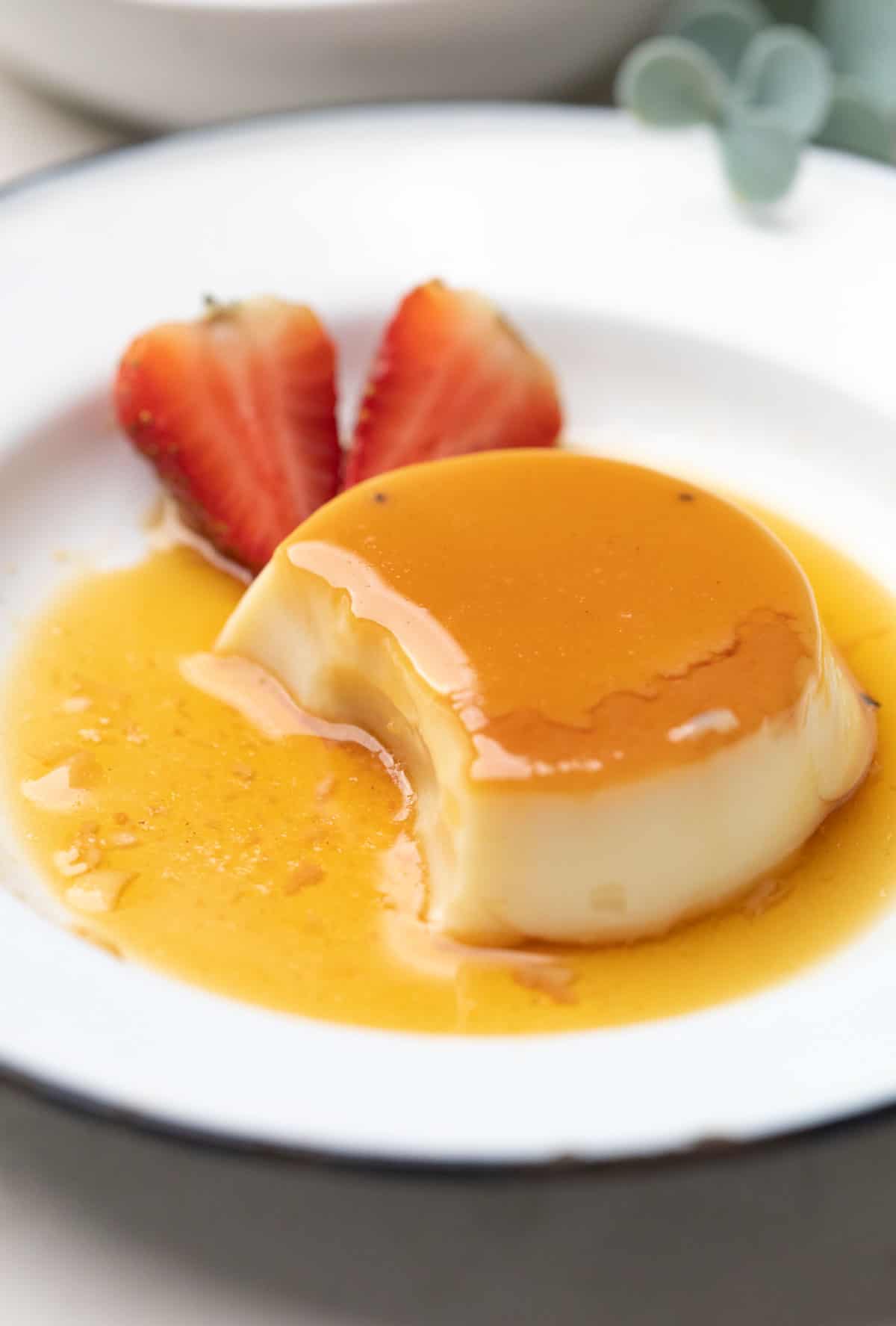
Looking for more Dessert recipes? Try my 3-Ingredient Biscoff Thumbprint Cookies, Quick 15 Minute Microwave Chocolate Pudding and Eggnog Tres Leches
Don't let that bouncy texture and velvety consistency of this caramel custard intimidate you. Making it at home is easier than you think - even by total beginners!
Also known as Flan de Leche and Crème Caramel, caramel custard originates from Southern Europe and Latin America. Its a dish that much loved around quite a few regions and I can why – it’s creamy yet light, sweet, and bouncy. So fun to eat and always such a treat.
Quick Walk Through: Caramel Custard
Ingredients You'll Need to make Caramel Custard
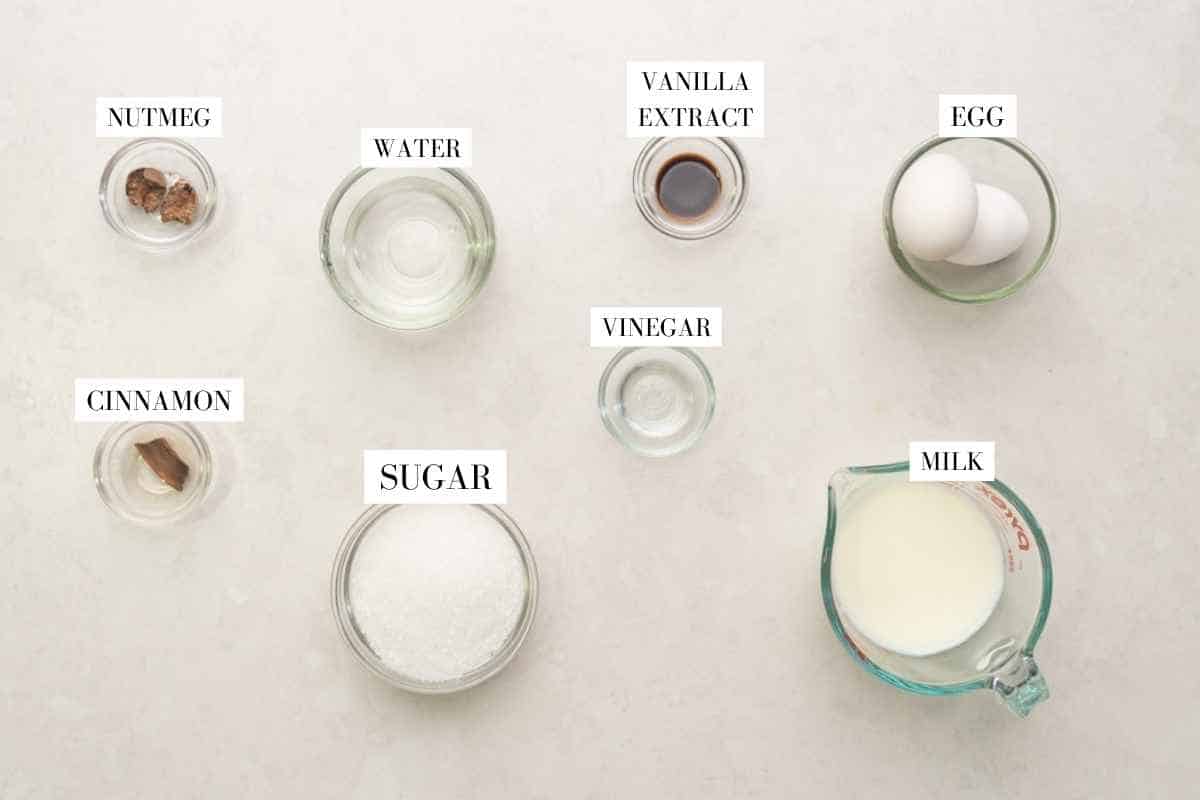
Ingredients:
For the custard, you will need eggs, milk, sugar, and vanilla extract.
Eggs - using whole eggs for this recipe
Milk - This recipe works best with whole milk
Sugar - To sweeten the custard, the caramel layer adds only a hint of sweetness
Vanilla Extract - For flavour, this also counters the eggy flavour
Equipment:
Baking tin - any large dish that can fit your individual ramekins with some extra space is great here. This is for the water bath for our flan - we want to put water around 2-3 inches thick around the ramekins to help bake the flan evenly.
Ramekins/moulds - you can use a large dish if you prefer and cut the flan into slices when serving or use individual ramekins if making for a smaller crowd. The ramekins give it that signature circular shape.
Trick To Melt Sugar Perfectly
Most recipes will ask you to melt sugar in a saucepan until golden to create the caramel layer for the custard. This sounds straightforward, but there’s actually a lot of room for error here. The sugar can burn easily so instead, I like to dissolve the sugar in water on a saucepan and add some vinegar to prevent the mixture from clumping. Extra ingredients but a simplified process (and an easier clean up too!) that trust me, you’ll appreciate!
How to make Caramel Custard
Here's a step-by-step collage showing you how to make caramel custard:

1. Add sugar, water and vinegar to a pan and allow it to heat up on a medium flame. Stir to ensure that the sugar dissolves.
2. Once the sugar dissolves, do not stir this will cause the sugar to crystallise. Allow the mixture to bubble and heat up for 3-4 minutes or until the caramel is a amber or golden colour.
3. Once the desired caramel colour is achieved, pour it into 5 ramekin moulds while still hot. Be careful as this can cause severe burns if it comes in contact with your skin.
Keep the moulds aside and allow the caramel to harden.
4. Heat milk, cinnamon and nutmeg in a pot over medium heat. Do not bring it to a boil. Just warm it up until the milk is scalding (180F/82C) and turn off the heat. Remove the cinnamon stick and discard.
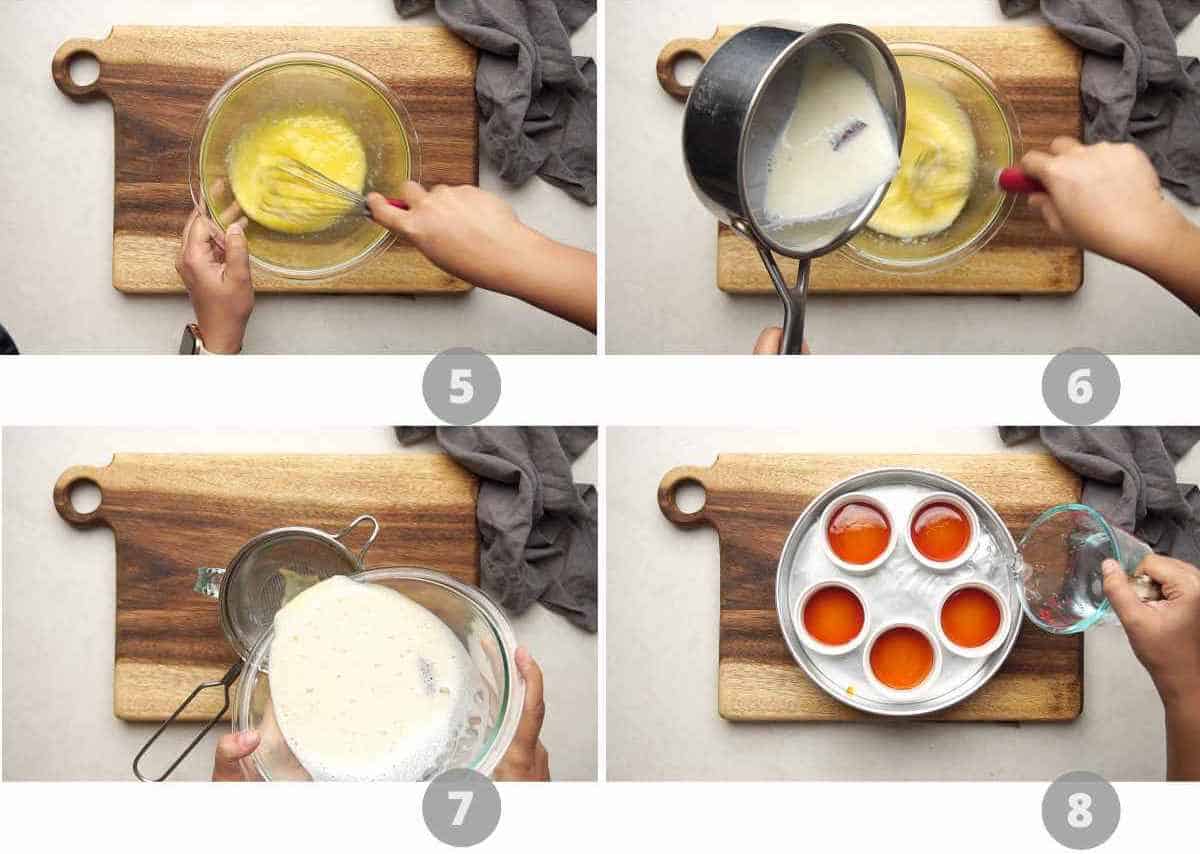
5. While the milk is heating up, whisk together eggs and sugar until light and fluffy.
6. Temper the eggs by adding the milk (while it is still hot) in a slow stream while continuing to whisk vigorously. Add vanilla extract and whisk until well combined.
7. Use a fine sieve to strain this mix into a pouring mug.
8. Place the ramekin moulds into a 9 inch baking tin. Fill three quarters of the tin with hot boiling water.
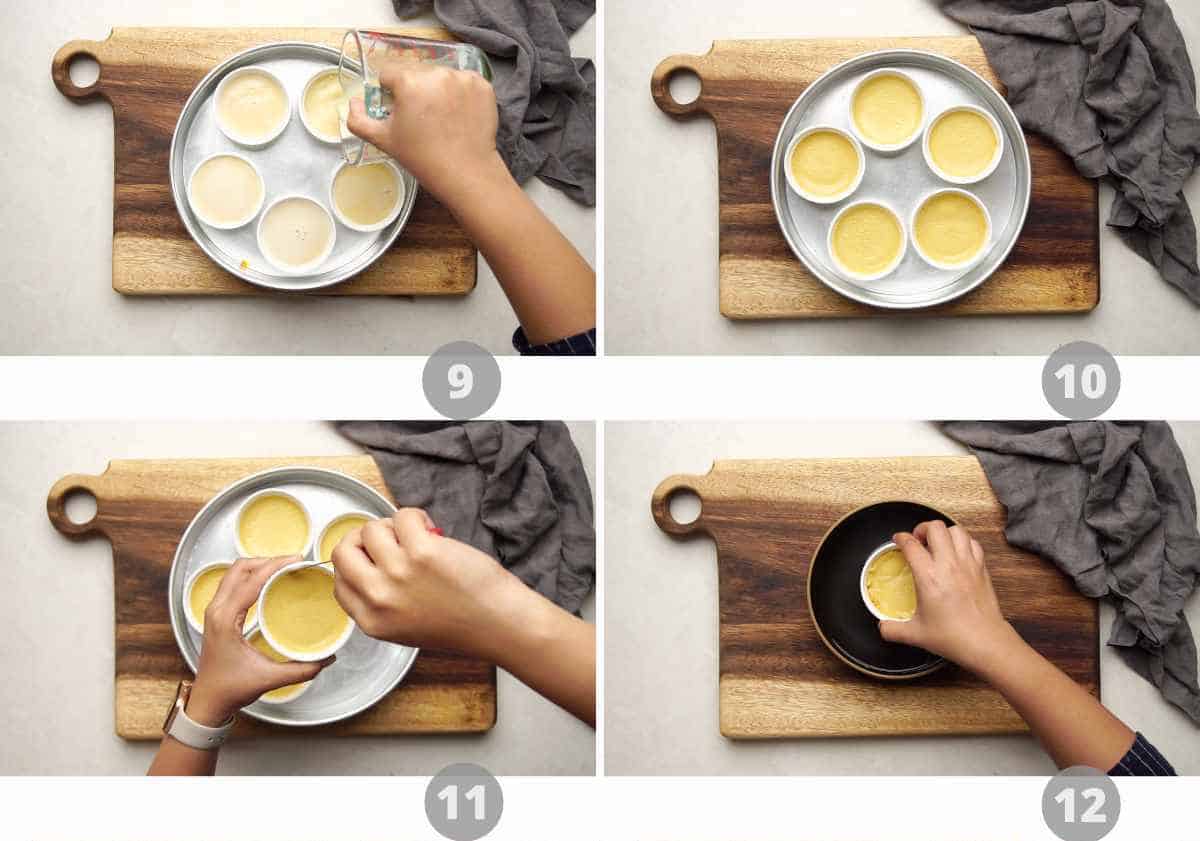
9. Pour custard mix into the ramekin moulds once the caramel has hardened. Do not fill it up to the brim, leave a 1 cm gap on top to give the custard some breathing room while baking. Carefully transfer the tin to the oven and bake for 40 minutes at 180C.
10. Once baked, the custard will have a slight wiggle but with a firm layer on top. Remove from the oven and allow to cool to room temperature. Transfer the ramekin moulds into the fridge and allow it to set for 4-6 hours before demoulding.
11. To demould, run a knife along the side of the mould to loosen the custard.
12. Then immerse the ramekins in medium hot water for 10 seconds, being careful not to let water seep into the caramel custard.
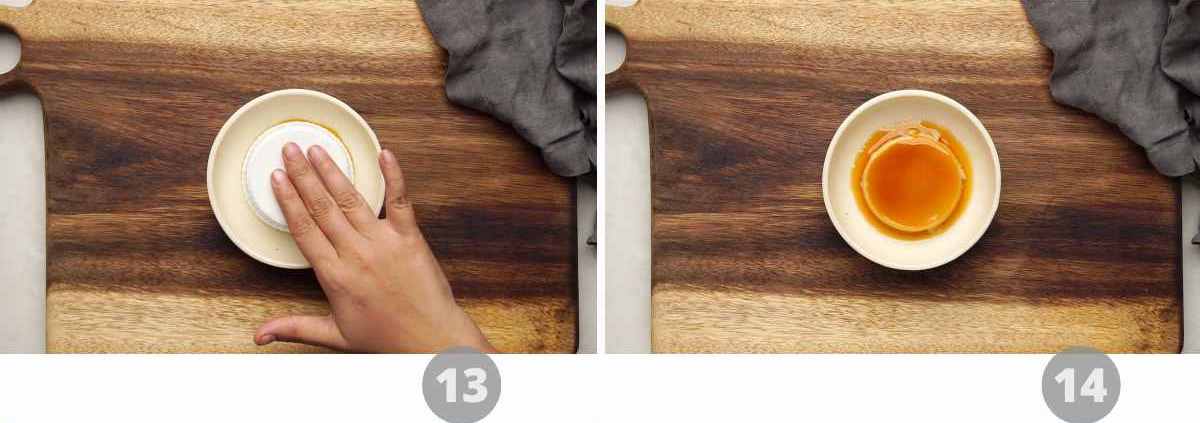
13. Let them rest on the counter for another 5-8 seconds Then carefully invert it onto a plate and demould.
14. Serve immediately!
Frequently Asked Questions
Caramel custard is also known as Flan and Crème Caramel and there are regional variations to how it is served.
A runny custard is a sign that it has not been fully cooked and so is not setting. You want to take it out of the oven when it appears firm but has just a slight wobble to it.
If your caramel custard tastes eggy, that’s a sign that it has been overcooked. Remember the slight wobble when taking it out of the oven – that’s what we want! This will also happen if you skip adding good quality vanilla extract.
Caramel thickens when cooling based on the temperature that it was heated on. If your caramel is not thickening, that means it was heated at a lower temperature not ideal for caramelization.
You need to wait a couple minutes for the caramel to harden in the mould before pouring in the custard. If you add the custard right away, it will combine with the caramel – meaning there won’t be a distinct caramel layer.
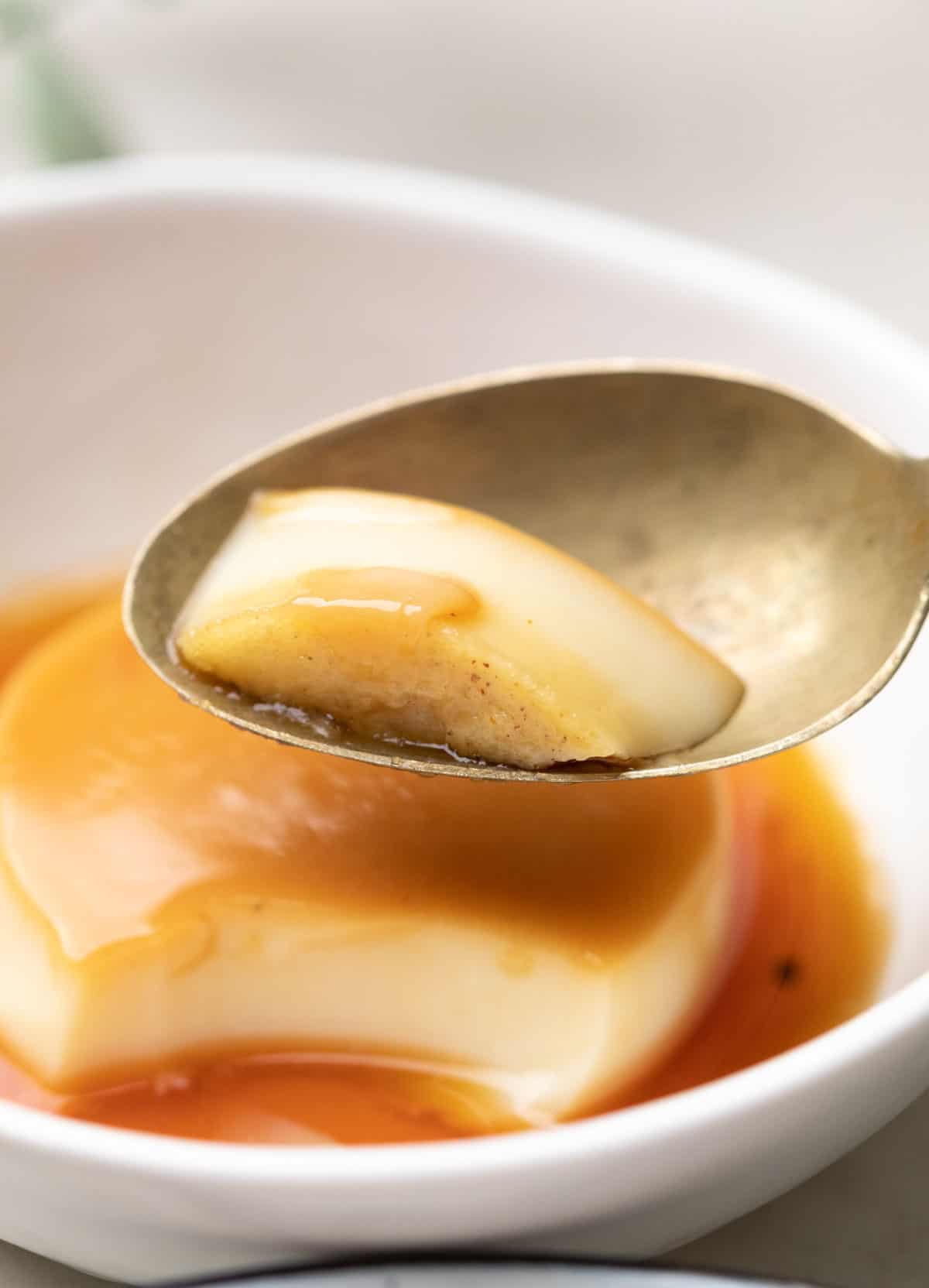
Top Tips to make the best Caramel Custard
- Once your sugar-water mixture dissolves, do not stir! We need to let the water evaporate for the sugar to start caramelizing and stirring too much will make the sugar seize.
- It should take around 6-8 minutes of heating for your caramel to form and be ready to cool. If the caramel appears to have browned evenly, it is ready.
- Hot caramel is dangerous! Don’t touch it or lick the spoon and be careful while pouring.
- Once you pour the caramel into the dishes, wait for a few minutes until it hardens before pouring in the custard – this will prevent the hot custard and caramel from mixing and this is what gives you that distinct caramel layer on top.
- It’s really important to temper the eggs and milk when making custard, which means slowly combining the two. Do this by pouring gently and continuously whisking when adding the warm milk to the egg mixture. Tempering makes sure that the eggs do not scramble - we don’t want that here!
- Make sure to bake the flan in an water bath for it to bake evenly. Don’t skip this – it might seem like an unnecessary extra step but it’s there for a reason.
- When removing the caramel custard from the moulds, run a knife around the edges, soak the dish in hot water for about 5-10 seconds and invert onto your serving dish.
Caramel Custard Variations
There’s a lot of variations to how caramel custard is served if you want to make it fancy – add a dollop of whipped cream, with dulce de leches, or with coffee. Some variations add orange zest and cinnamon to the custard, and some add condensed milk and coconut. There’s a lot of ways to get creative with this recipe and it makes for a great base recipe to turn to at any time.
Once you get the techniques down, making caramel custard is so easy. I don’t always have the time to get additional ingredients for dessert, but I love this recipe because it’s made using ingredients you always have at home, and its quick prep time helps a lot too! This caramel custard is best served chilled and is a great dessert option for dinner parties when the meals tend to be heavier but you still want something sweet to serve afterwards.
Watch How to Make Caramel Custard Video
LOVE THIS RECIPE? Subscribe to my newsletter and be the first to receive all new recipes!

Caramel Custard
Ingredients
Caramel
- ⅔ Cup Sugar 150 Grams
- ¼ Cup Water
- ½ Teaspoon Lemon Juice or Vinegar
Custard
- 220 Millilitres Milk
- ½ Inch Piece Cinnamon
- A Pinch Grated Nutmeg
- 2 Eggs
- ¼ Cup Sugar 50 Grams
- ½ Teaspoon Vanilla Extract
Instructions
Caramel
- Add sugar, water and vinegar to a pan and allow it to heat up on a medium flame. Stiry to ensure that the sugar dissolves.
- Once the sugar dissolves, do not stir this will cause the sugar to crystallise. Allow the mixture to bubble and heat up for 3-4 minutes or until the caramel is a amber or golden colour.
- Once the desired caramel colour is achieved, pour it into 5 ramekin moulds while still hot. Be careful as this can cause severe burns if it comes in contact with your skin.
- Keep the moulds aside and allow the caramel to harden.
Custard
- Heat milk, cinnamon and nutmeg in a pot over medium heat. Do not bring it to a boil. Just warm it up until the milk is scalding (180F/82C) and turn off the heat. Remove the cinnamon stick and discard.
- While the milk is heating up, whisk together eggs and sugar until light and fluffy. Temper the eggs by adding the milk (while it is still hot) in a slow stream while continuing to whisk vigorously.
- Add vanilla extract and whisk until well combined.
- Use a fine sieve to strain this mix into a pouring mug. Pour it into the ramekin moulds once the caramel has hardened. Do not fill it up to the brim, leave a 1 cm gap on top to give the custard some breathing room while baking.
- Place the ramekin moulds into a 9 inch baking tin. Fill three quarters of the tin with hot boiling water. Carefully transfer the tin to the oven and bake for 40 minutes at 180C.
- Once baked, the custard will have a slight wiggle but with a firm layer on top. Remove from the oven and allow to cool to room temperature. Transfer the ramekin moulds into the fridge and allow it to set for 4-6 hours before demoulding.
- To demould, run a knife along the side of the mould to loosen the custard. Then immerse the ramekins in medium hot water for 10 seconds, being careful not to let water seep into the caramel custard. Let them rest on the counter for another 5-8 seconds Then carefully invert it onto a plate and demould. Serve immediately!

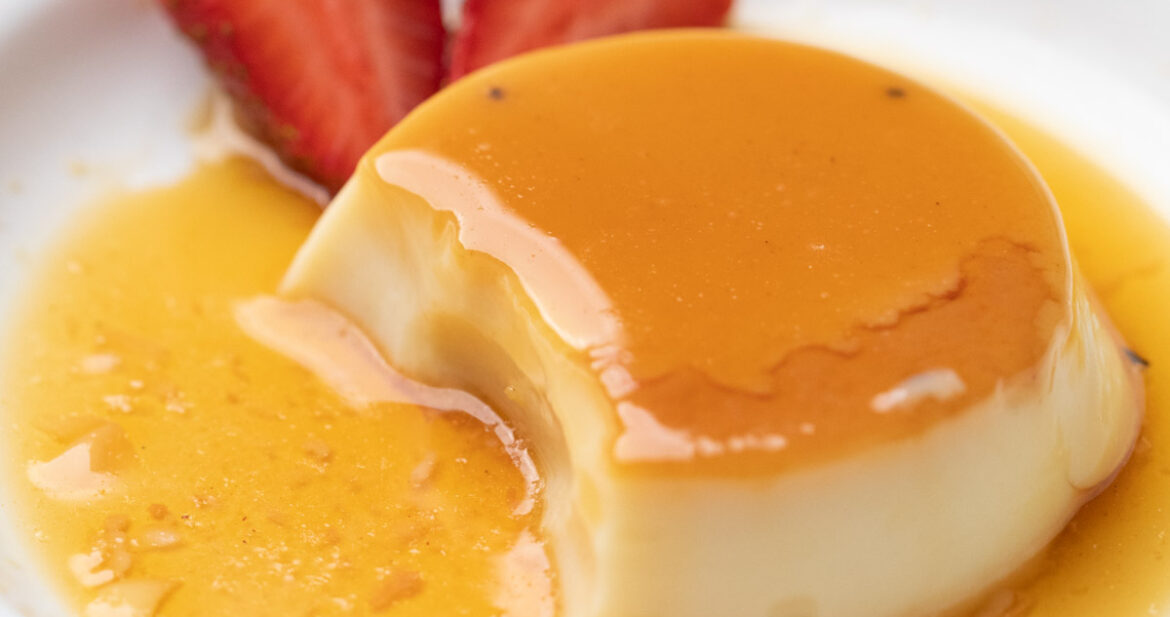
Suriya says
Nice blog! Thanks for sharing useful information about caramel custard blog